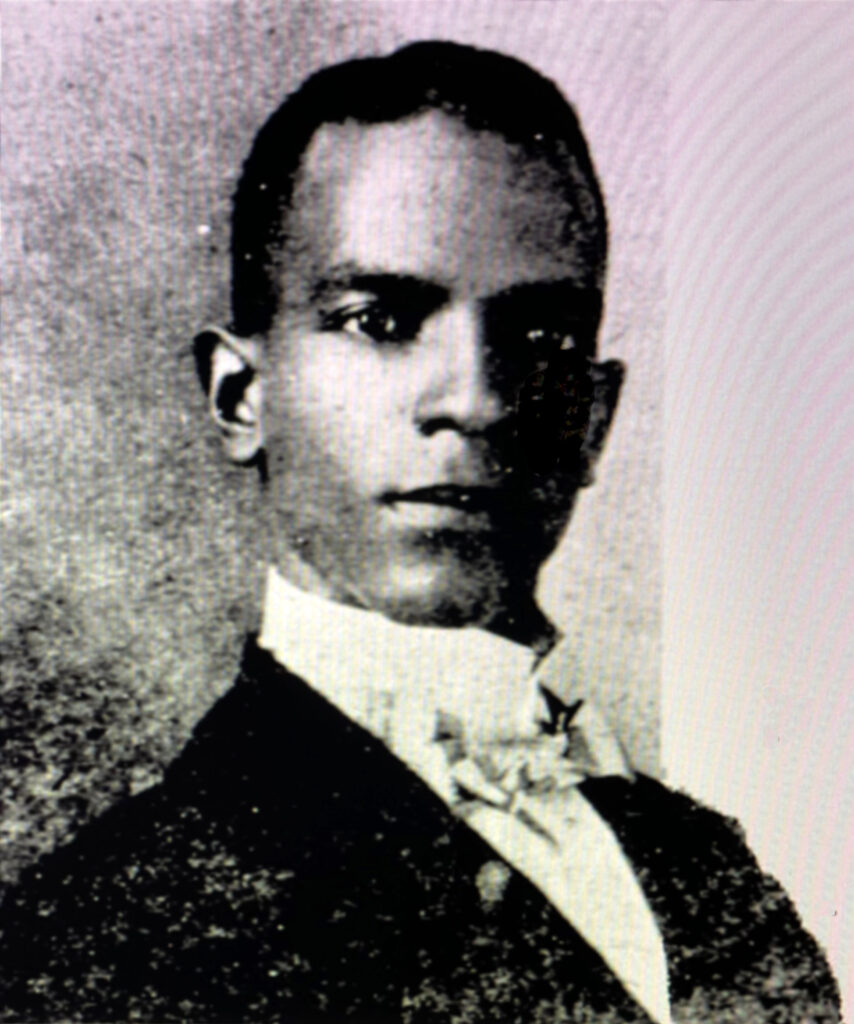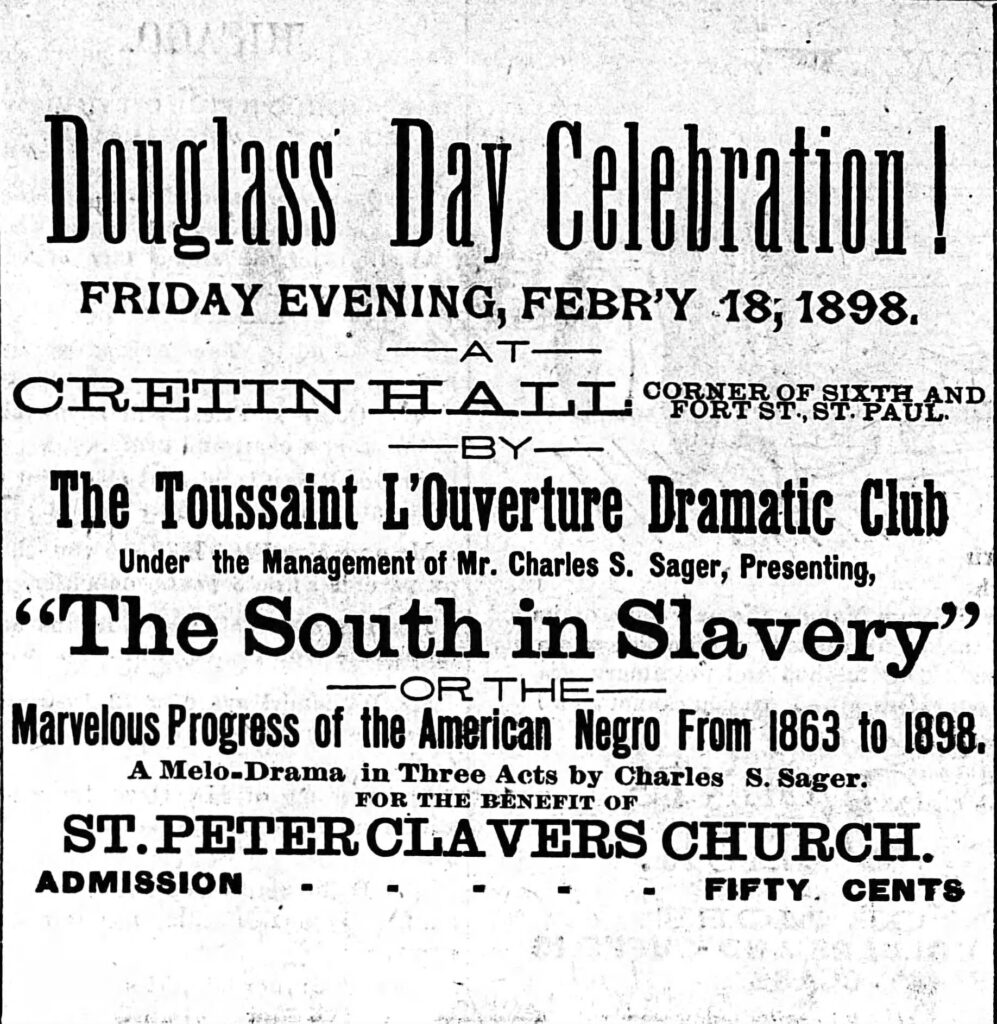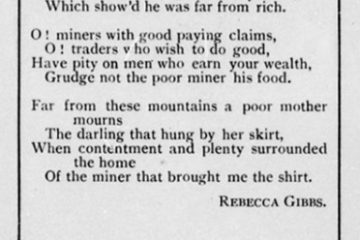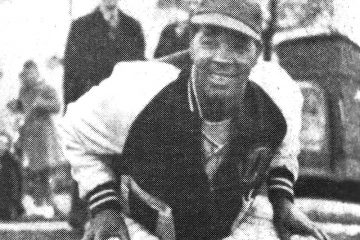Charles S. Sager
Charles S. Sager called out racism in an open letter to Prince George city council in 1921
“We are forced to bear the full responsibility of our race, forced into the lowest of menial occupations and then despised for doing so.”
Researched and written by George Davison
Charles Stuart Sager was born in Montgomery, Alabama in 1867 and began his career carrying the mail and barbering in Butte, Montana in 1890. He soon was singing, dancing, acting and putting on his own plays (The Sunny South in Slavery, Cake Walk, The Negro, Darkness and Dawn, The Man from Bam) from Butte, Montana and Spokane, Washington (1894), through the mid-west to New York’s Carnegie Hall (1902) and Chicago’s Pekin Theatre (1905-6), the first all-Black theatre in the U.S.His productions had casts of over 100; several of the venues held over 1,000 patrons; and many were benefit concerts for African Methodist Episcopal churches, Knights of Pythias lodges, and New York’s Mount Tabor Manual Training & Industrial School.
Arrival in Fort George on a Scow Converted into a Bathhouse and Barbershop
At the peak of his fame, for some unknown reason, Sager left the U.S. in 1906, barbering (and sometimes performing) in Winnipeg, Manitoba before coming down the Fraser River and arriving in Fort George on a scow converted into a bathhouse and barbershop in September 1913.
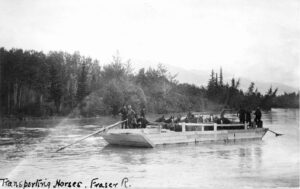
Charles Sager arrived in Fort George on a scow converted into a bathhouse and barbershop in September 1913. Photo: Scow carrying horses on Fraser River, 1912. The Exploration Place [Prince George] P990.17.40 / Logan Collection.
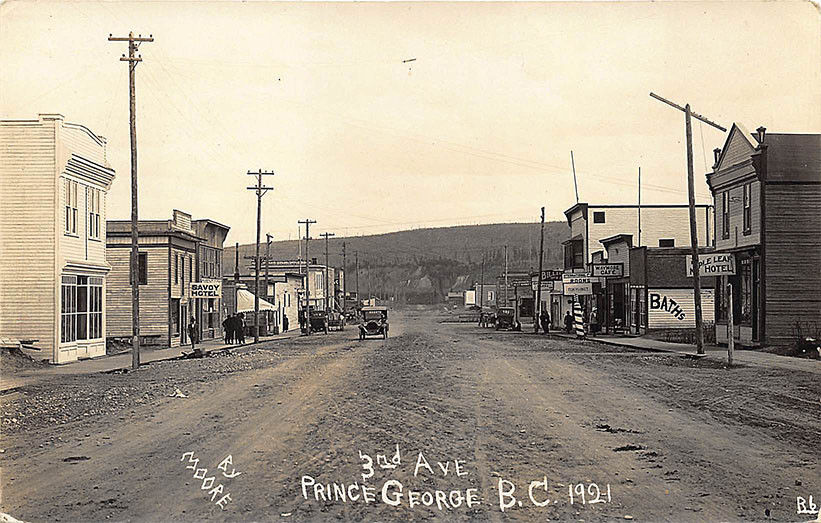
Charles Sager’s bathhouse and barbershop are seen on the right side of this 1921 postcard, the same year he called out racism in an open letter to city council. R.M. Moore, 3rd Ave Prince George B.C. 1921.
He opened the Metropolitan Baths on 3rd Avenue in March 1915, and for the next 15 years was a stalwart of the community. He helped fund-raise for the Methodist Ladies’ Aid, performed vaudeville shows with the Pierrot Troupe and the Male Glee Club, and was a member of Knox Church.
Sager called out racism in an open letter to city council in 1921 after some wanted to expel ‘undesirable elements’.
“We are forced to bear the full responsibility of our race, forced into the lowest of menial occupations and then despised for doing so,” Sager wrote. “We ask a square deal; the equality of opportunity and of privilege from the powers that be, and the honest endeavor to cultivate interracial respect. Race prejudice is not so much a matter of startling deeds as of petty insinuations.” 1
Willa Sager Buried in Prince George
When his second wife Willa died in November 1926, there was a large funeral – she is buried in the Prince George Memorial Cemetery. Sager left Prince George for Brooklyn in January 1930, saying he had waited long enough for the Pacific Great Eastern Railway to arrive (it came in 1952).
He ended his acting career with a bit part in Flo Ziegfeld’s “Smiles” which ran in Boston in October-November 1930, and then on Broadway from December 1930 to January 1931.
He married twice more in Brooklyn before dying at the age of 89.
1 Sager, Charles S. “An Open Letter To the Honorable The Mayor and Members of the Council, City of Prince George.” The Leader [Prince George], 6 May 1921, p 4.
